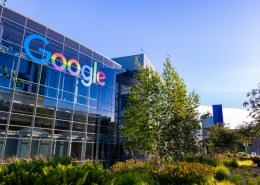Google Ad Grants is a program that google sponsors which provides nonprofit organizations with cost-free advertising credits on the Google Ads network.
Due to the fact that they are presented to users who are searching Google for pertinent terms, Google Ads are very effective. So, the traffic your advertisement brings in is highly focused. For organizations trying to attract new donations, boost website traffic, and broaden their reach, Google Ads are incredibly important due to their remarkable combination of targeting and efficacy.
How Google Ads Grant Work
Signing up is a simple process that doesn’t take long. You must first create a free Google Ad Grants account. then you must submit an application (you can do this by answering a few questions and uploading a few basic stats). The grants team will go through your report and contact you with the results. Once you are approved, your organization will receive $10,000 per month in Google Ad credits.
How Nonprofit Use A Google Ad Grant
Your nonprofit can utilize Google Ad Grants, a fantastic marketing tool, to spread the word about your cause and motivate supporters to do certain activities. Google Ad Grants are used by qualified NGOs to undertake a range of campaigns for a number of goals, including
Spreading Awareness: If the objective of your organization is to raise public awareness of a particular issue, you can use your Google Ad Grant to start informational campaigns.
Attracting New Donors: For nonprofit to remain operational, donor solicitation is crucial. A Google Ad Grant campaign will help your nonprofit reach more potential donors, increasing brand recognition and generating donations.
Recruiting Volunteers. To further your purpose, do you require more people? In order to recruit volunteers for upcoming campaigns or ongoing projects that could always use more help, nonprofit organizations can leverage Google Ad Grants to launch their campaigns.
Informing Potential Beneficiaries About Your Services: You can attract their attention with a Google Grant if your nonprofit offers a service that people might be looking for online. For instance, an organization that donates school supplies to low-income families might start a campaign using phrases like “free school supplies” to appear in a range of relevant inquiries that potential recipients are likely to type in.
Promoting Ongoing Events Or Fundraisers: You can use Google Ad Grants to advertise other ongoing fundraisers, events, and activities at your nonprofit in the same way that your nonprofit can encourage people to donate money or volunteer their time.
People Eligible For Google Ad Grants
For a nonprofit to qualify for Google Ad Grants, they must:
- Have a nonprofit organization registration in a nation where Google for Nonprofits is offered.
- satisfy the requirements in its country
- Accept the Additional Terms of Service for Google for Nonprofits.
Tips For Getting More Clicks On Your Google Ads
Let’s look more closely at how to increase the frequency at which your adverts display and the number of times they are clicked
- 1. Offer insightful materials that establish your business as a thought leader in your area of expertise, such as manuals or webinars. Publish a call to action on the landing page for this rich media encouraging users to sign up for your email newsletter.
- 2. To “tweak” and “optimize” your results over time, use AB testing.
Google rewards marketers who are proactive against those who simply put up campaigns and hope for the best. - 3. Check that your website content reads well, is responsive to mobile devices, and loads rapidly before you start a Google Ad campaign. Similar to how you wouldn’t want your offices to be in a mess during a major event, your website should appear and function as professionally as feasible. Your website will be examined by Google, thus it needs to be positive about your company. Both Google’s algorithms and staff members look for reliable charities that “embrace” online marketing as a revenue channel.
- 4. When configuring your ad, you can choose whether to give clicks or impressions priority. Select “Clicks” to target your advertising more precisely at browsers who are more likely to visit your website.
- 5. It will save you a lot of time and reduce human error in data entry if your nonprofit’s donor or constituent relationship management system allows for website integration for self-service. Email addresses, donations, volunteer or member information, and registrations for events or courses are all areas where this is especially useful.
Tips For Using A Google Ad Grant
Now your ad is live, it’s a good idea to go back through and make sure everything is set up correctly and adjust things accordingly. Read the following tips to make sure you are getting the most out of your ad.
1. Structure Your Account
For each service you wish to promote, make ad groups that are closely related in theme. For instance, you wouldn’t launch a single campaign about “visual aids” if you were a company that offered visual assistance. You would have to create several campaigns,
Make ad groups for each of these campaigns that correspond to Google users’ search patterns. In other words, consumers will only see your advertisement if it is pertinent to their search.
Pick relevant keywords.
The keywords used in each ad in an ad group are the same. Consider the phrases you would enter into the Google search bar to identify the products or services that each ad group is promoting. You can group together relevant keywords using Google’s Keyword Planner tool.
The default setting for a new keyword is “wide match.” This implies that regardless of the additional terms a user has added to their search, your ads will appear when they do so.
2. Create Effective Ads
Make sure your ads are pertinent to the keywords in each ad group as you write three to five for each. Avoid obscure acronyms and abbreviations, and instead, use succinct, non-repetitive statements. Determine the distinctive qualities of your company and concentrate on them.
3. Target The Right Audience
Advertisements can be targeted to your favorite languages and regions. You can select cities, regions, or countries to narrow down the distance from the service area of your organization.
4. Track What People Do After Clicking On Your Ads
Customers’ actions on your website can be monitored using Google Analytics or Adwords. You can see, for instance, if they are visiting your website, signing up for your newsletter, or giving money. You can use this information to determine the ideal future keyword and advertisement setup.
You have two options for tracking conversions in AdWords: installing the conversion tracking code on your website or importing goals from Google Analytics. Use the same email address for both your AdWords and Analytics accounts to make it simple to connect the two.
5. Automatically Set Bids
You can save time optimizing the ad for your objectives by automating your bids. A Smart Bidding technique called “Maximize Conversions” sets bids for your campaign automatically in order to maximize conversions while staying within your budget. This tactic determines the keywords that are most likely to result in the desired action and bids more on them while placing fewer bids on others. Turn on Maximise Conversions in the Settings tab of your campaigns.

